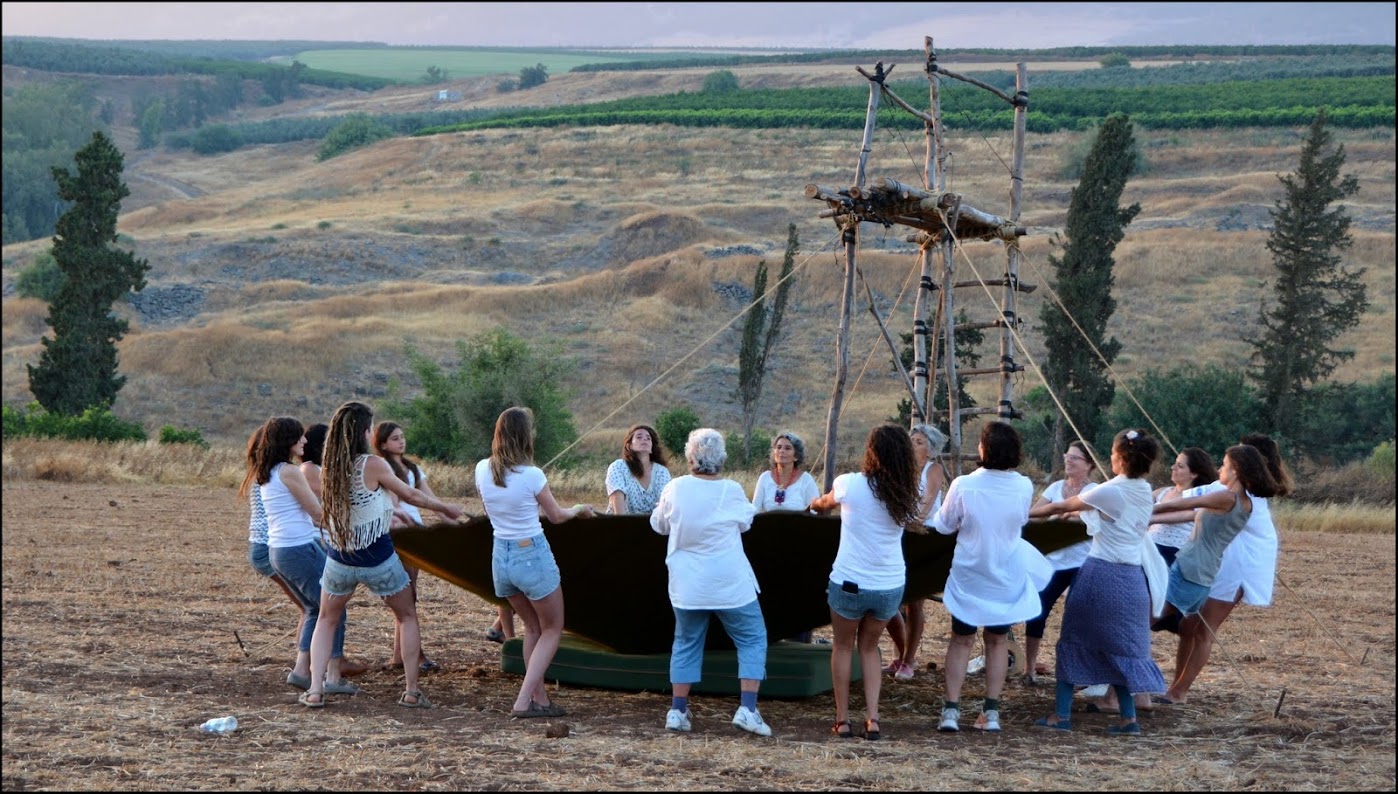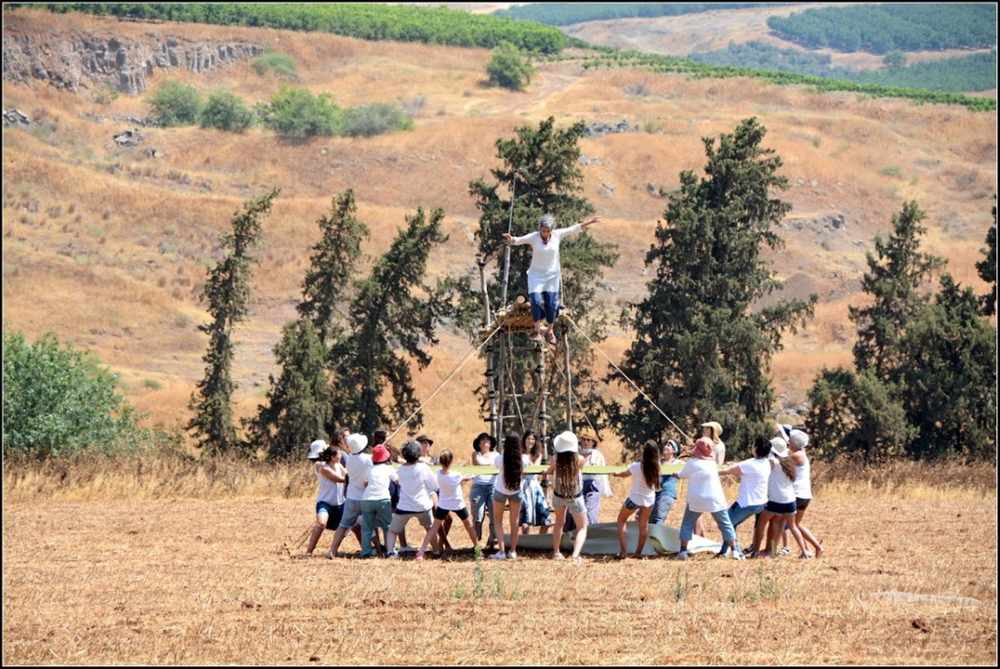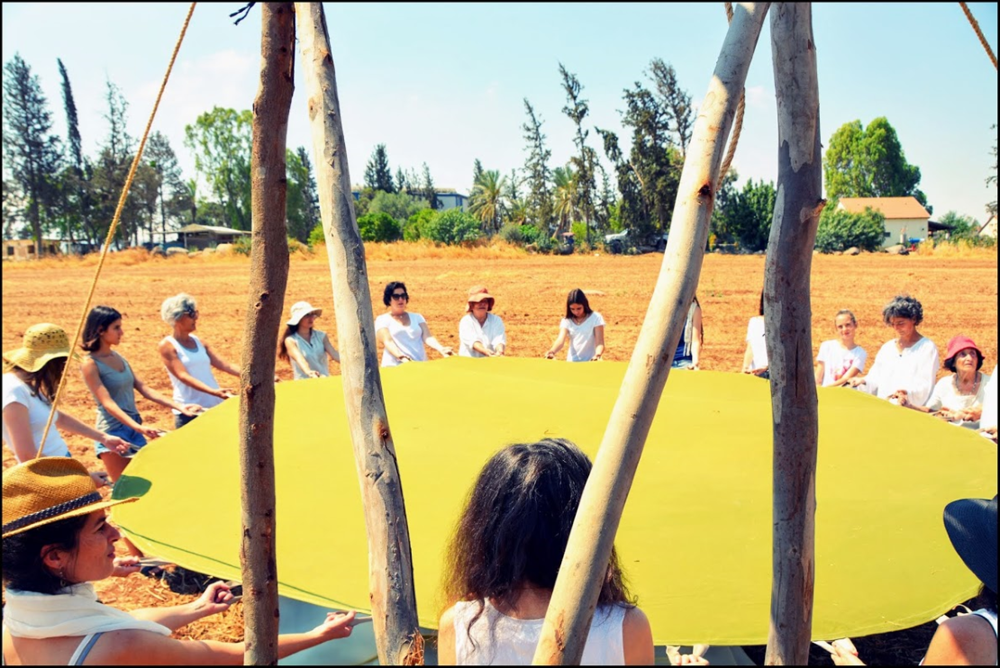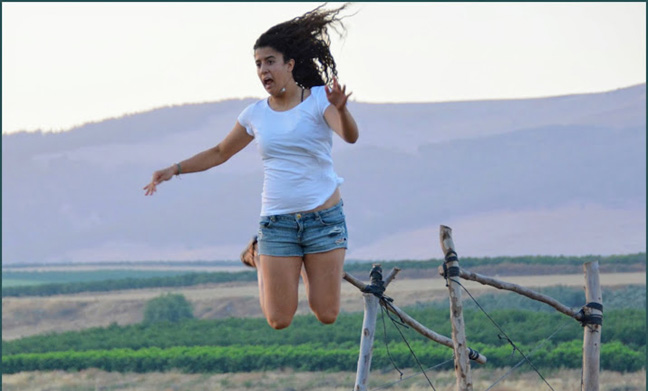Noa Raz Melamed
Demeter and Persephone
Curator: Yaniv Shapira
20 August 2021

Noa Raz Melamed / Demeter and Persephone
The exhibition before us presents another chapter in Noa Raz Melamed’s engagement with kibbutz life and pioneering, which she examines from a personal and contemporary point of view. The title of the exhibition refers to two figures in Greek mythology: Demeter, the goddess of grain and fertility, who taught humans how to grow wheat, and Persephone, her daughter, who is responsible for the seasons and the cycles of growth and decay. Their story is also about a relationship of connection and separation between mother and daughter.
The video work Tarp Jumping, which is at the center of the exhibition, is the product of an initiative by Raz Melamed, a native of Kibbutz Geva. She approached her immediate family circle, the women of the Raz clan – grandmothers, mothers, daughters, and granddaughters – who gathered for a joint action in the stubble fields of Kibbutz Geva, against a backdrop of fields, orchards, hills, and cypress trees. In the video, they are all dressed in white, standing in a circle and holding taut a tarpaulin sheet next to a rickety tower built of wooden poles attached together by ropes. One by one, they jump from the tower onto the tarpaulin, in a simulation of the “courage exercises” that for many years was a staple of Israeli group training. The camera focuses on the participants’ facial expressions and body language, which express alertness, concentration, hesitation, and apprehension. The moment of the jump, in which each participant is responsible for the safety and security of the other, embodies a commitment and trust in the group, in the family, and in the female circle. The soundtrack to the work underscores the fragility of this trust in the circle: the song Yam Hashibolim (“Sea of Stalks”) – one of the best-known songs of the Gevatron singing troupe, which is identified with the pioneer settlements in general, and with kibbutzim in particular – is heard in the soft voice of the artist’s mother, who was a member of the troupe for many years, as a kind of lament for a world that no longer exists. Raz Melamed introduces deliberate disruptions to the familiar soundtrack, thereby casting doubt on that idyll and implying that for her it has never actually existed in the real world.
The wicker work installed in the space consists of grain stalks that the artist collected in the fields of her native Jezreel Valley. She wove them together to form a tenuous structure that extends from floor to ceiling and appears to be hanging by a thread. The images incorporated within it are mostly taken from reliefs and urn paintings depicting Western myths; also associated with the Jewish circle of life, they allude to the ethos of the Jewish festival of Shavuot and harvesting in the kibbutzim. Raz Melamed fuses all of this with the images of the Valley, the home, and the family seared in her mind.




